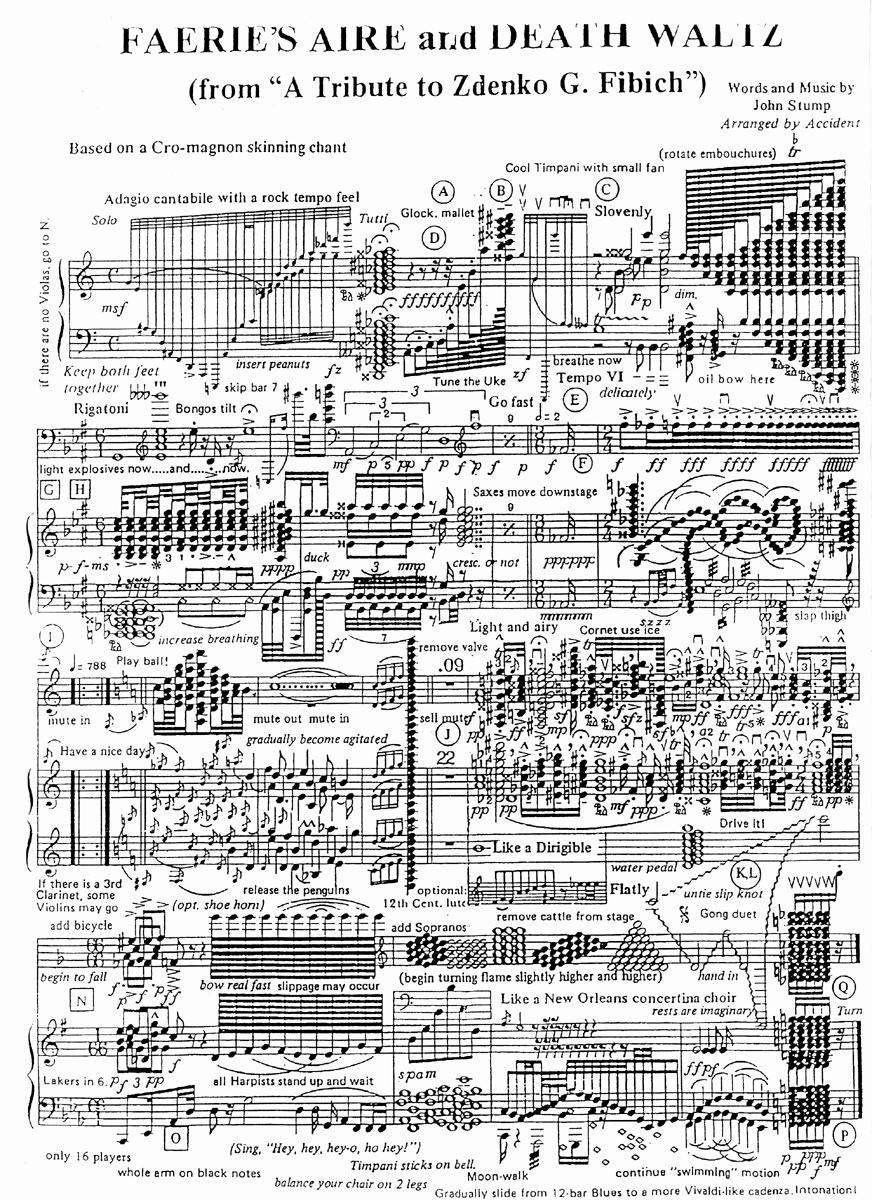I've always viewed such "modern works" as being mostly an effort on the part of their composers to differentiate themselves from those who have gone before. Composers have been churning out symphonic music for about two hundred and fifty years now, and it's hard to write something in that vein (i.e., classic "art music") that doesn't sound derivative. By striking out in "new" directions, modern composers can more easily escape the bounds set for them by those who have gone before.
My last Lukas Foss experience was the most surreal. He directed the Washington University (in Saint Louis) Symphonic Orchestra in a premier performance of one of his works. It consisted of a couple of pages of whole notes (the players of which were pre-selected by the maestro during the rehearsal), the dynamics being selected from the podium on the day of the performance. After about five minutes of this crap, there was a cadenza, a great big honking long one, that was written in C concert in all of the parts, but which was meant to be performed as written (i.e., not transposed) and played by everyone at their own pace, until all ended up on a C major chord.
I was the group's bass clarinetist/low saxophone/extra bassoon player that year, and I elected to play the "composition" on the school's old, rattling Heckel straight contra bassoon (that I had only just discovered the previous year, laying neglected in the back of the instrument storage room). The beauty of it was that, no matter what I played, it didn't really matter all that much.
A very nice guy, though, that Foss...
 )
)

